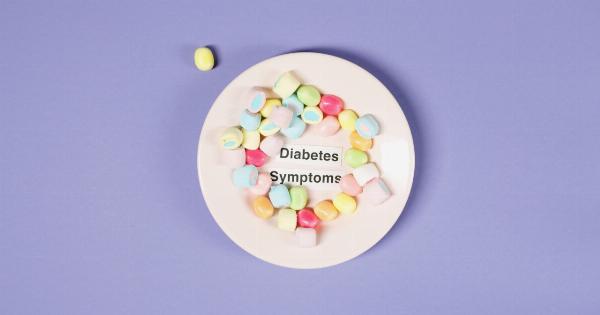Obesity is a growing global health issue that affects millions of people across the world. It not only poses significant risks to overall health but has also been linked to various eye conditions, including cataracts.
Cataracts are a common age-related eye disorder that causes cloudy vision and can significantly impact a person’s quality of life. Understanding the link between unhealthy weight and cataract development is crucial for public health and prevention strategies.
What Are Cataracts?
Cataracts occur when the lens of the eye becomes cloudy, leading to blurred or decreased vision. The lens is responsible for focusing light onto the retina, which enables clear vision.
With cataracts, the clouding of the lens prevents light from properly reaching the retina, resulting in vision impairment.
Cataract development is primarily attributed to the natural aging process of the eye.
However, several risk factors can contribute to the formation and progression of cataracts, including genetic factors, smoking, diabetes, excessive UV light exposure, and certain medications. Emerging research also suggests that obesity and unhealthy weight may play a role in cataract development.
The Role of Unhealthy Weight in Cataract Development
Obesity is characterized by excess body weight, especially in the form of adipose tissue or body fat. It is associated with various systemic health conditions, such as cardiovascular diseases, diabetes, and metabolic syndrome.
Recent studies have also found a significant association between obesity and the development, severity, and progression of cataracts.
1. Increased Oxidative Stress
Obese individuals often experience increased oxidative stress due to the accumulation of adipose tissue. Oxidative stress occurs when there is an imbalance between free radicals and the body’s antioxidant defenses, leading to cellular damage.
The lens of the eye is particularly susceptible to oxidative stress, potentially promoting the development and progression of cataracts.
Adipose tissue produces pro-inflammatory substances and alters the body’s antioxidant mechanisms, further exacerbating oxidative stress. This imbalance can lead to lens protein damage and the formation of cataracts.
Additionally, obesity-related conditions such as diabetes and metabolic syndrome can contribute to increased oxidative stress, accelerating cataract development.
2. Altered Blood Sugar Levels
Obesity and overweight are closely associated with insulin resistance, a condition in which cells fail to respond effectively to the hormone insulin.
Insulin resistance and subsequent hyperinsulinemia (high insulin levels) are common in obese individuals, particularly those with central or abdominal obesity.
High insulin levels have been linked to the development and progression of cataracts. Insulin receptors are found in the lens, and excessive insulin levels can disturb cellular processes, leading to structural changes and damage.
Additionally, high blood sugar levels in uncontrolled diabetes can have a detrimental effect on the lens and promote cataract formation.
3. Chronic Low-grade Inflammation
Obesity is considered a chronic low-grade inflammatory state as fat cells release pro-inflammatory molecules called cytokines. This chronic inflammation is thought to contribute to the pathogenesis of various systemic diseases.
In the case of cataracts, chronic low-grade inflammation may play a role in the development and progression of lens opacity.
The lens is a unique avascular structure that relies on the diffusion of nutrients and oxygen from the surrounding fluid for its health and function.
Obesity-related inflammation can disrupt this delicate balance, impairing lens nutrition and promoting cataract formation.
4. Hormonal Imbalance
Obesity alters hormonal balance and can lead to abnormal levels of various hormones in the body. Imbalances in hormone levels, such as estrogen, testosterone, and growth hormone, have been associated with the development and progression of cataracts.
Estrogen, in particular, plays a protective role in maintaining lens transparency by inhibiting oxidative damage.
Obesity-related hormonal imbalances can disrupt this protective effect, making the lens more susceptible to oxidative stress and cataract formation.
5. Impact on Surgical Outcomes
Obesity can also have implications for cataract surgery and its outcomes.
Cataract surgery is the most common surgical procedure performed worldwide, and its success depends on various factors, including the patient’s overall health and body weight.
Overweight and obese individuals may require special considerations during cataract surgery due to the presence of excess adipose tissue.
The increased surgical complexity may lead to extended operative times, higher complication rates, and suboptimal visual outcomes. It is important for surgeons to take these factors into account and tailor the surgical approach accordingly.
Prevention and Management Strategies
Given the growing evidence linking obesity and unhealthy weight to cataract development, prevention and management strategies are crucial for protecting vision and improving overall health.
1. Weight Management: Maintaining a healthy weight through a balanced diet and regular physical activity can reduce the risk of obesity-related conditions, including cataracts.
Incorporating nutritious foods, practicing portion control, and engaging in regular exercise can contribute to weight loss or weight maintenance.
2. Regular Eye Exams: Regular eye examinations, especially for those at higher risk, such as individuals with diabetes or a family history of cataracts, are essential. Early detection enables timely interventions and may slow down cataract progression.
3. Smoking Cessation: Smoking is a significant risk factor for cataract development and progression. Quitting smoking can significantly reduce the risk and improve overall eye health.
4. Diabetes Management: Properly managing diabetes through medications, lifestyle modifications, and regular check-ups is crucial for minimizing the risk of complications, including diabetic cataracts.
5. UV Protection: Protecting the eyes from excessive UV light exposure by wearing sunglasses and wide-brimmed hats can help reduce the risk of developing cataracts.
Conclusion
The link between unhealthy weight and cataract development is evident. Obesity and overweight contribute to oxidative stress, altered blood sugar levels, chronic inflammation, hormonal imbalances, and can impact surgical outcomes.
Recognizing the role of weight management, regular eye exams, and comprehensive preventive strategies is essential for reducing the burden of obesity-related cataracts and promoting better eye health.































